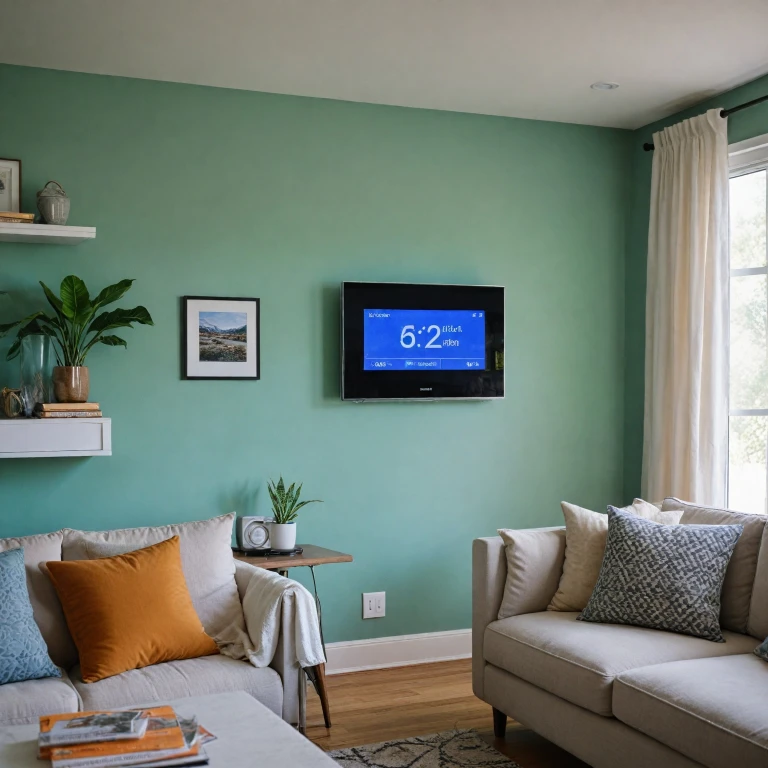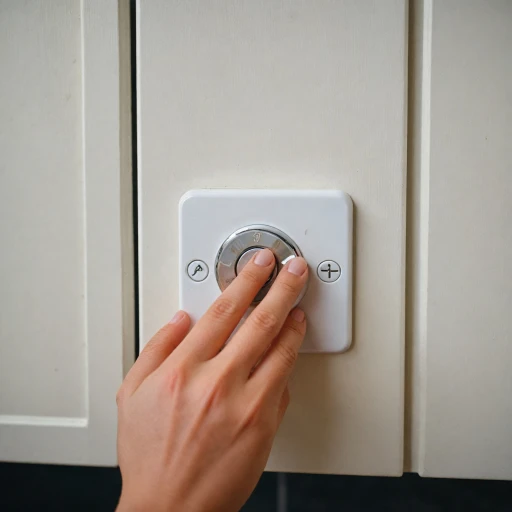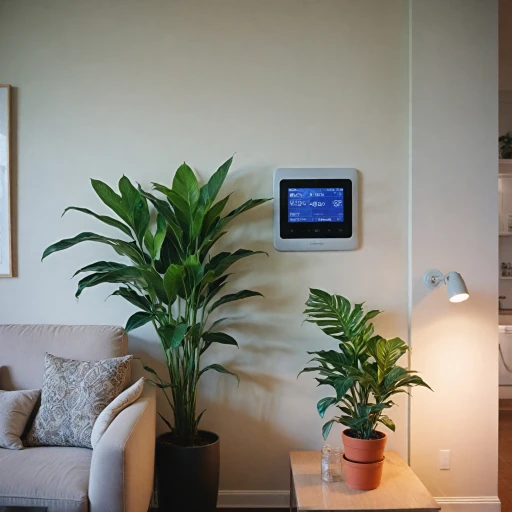The Basics of Mini Split Thermostats
Understanding Mini Split Thermostats
A mini split thermostat is an essential component in the world of modern HVAC systems, specifically designed to regulate the heating and cooling in individual rooms more effectively. Unlike conventional systems, mini splits consist of an outdoor compressor unit and one or more indoor air handling units, which allows for targeted temperature control. This setup provides a flexible solution for homes that require customized climate adjustments.Mini split thermostats offer precise control over your environment, catering to the room's specific needs. These smart thermostats can be managed through a remote controller, which facilitates easy adjustments without the need to physically interact with the device. Moreover, this capability is enhanced by the integration of smart technology, providing remote management via smartphone apps or home automation systems.
For those exploring the world of mini split thermostats, options like Cielo, Mysa, and Flair Puck are notable mentions, as they offer various features and price ranges to suit different needs and budgets. From controlling the air conditioner, heat pump, or coordinating your entire HVAC system, these technologies are designed to optimize energy usage while offering convenience and savings.
Smart thermostats have revolutionized the way we interact with our heating and cooling systems, making life more convenient and energy-efficient. By providing remote control over our HVAC systems, we can easily adjust settings to save on energy costs or simply enhance our comfort levels. Additionally, investing in a mini split thermostat can be an economical decision, given their ability to control temperature per room, reducing unnecessary energy consumption.
For those interested in learning more about maximizing their comfort with Mitsubishi mini split thermostats, feel free to explore this resource for detailed insights.
Benefits of Using a Mini Split Thermostat
Reaping the Rewards of Mini Split Thermostats
Mini split thermostats bring a host of advantages to your home, enhancing both comfort and convenience. Designed to integrate seamlessly with HVAC systems, these thermostats offer precise control over temperature settings, allowing you to tailor the heating and cooling of your space to your liking.
One of the standout features of a mini split thermostat is its ability to optimize energy use. With the temperature properly regulated, you minimize wasted energy, contributing to overall cost savings. This becomes apparent when you factor in the efficiency of modern heat pumps and air conditioners.
Furthermore, many of these devices come equipped with a smart remote control function, allowing you to adjust your settings from a distance. This remote capability is enhanced by smartphone apps, putting the power to modify your home's climate at your fingertips no matter where you are.
The convenience doesn’t stop there; mini split thermostats often feature integrations with larger smart home systems. Whether you use an Alexa, Google Assistant, or a bespoke smart thermostat system like the Cielo, you can seamlessly manage temperature control across multiple rooms.
Shipment delays and high price sales can sometimes add a stroke of concern, but with comprehensive options available and some brands offering free shipping, the process is made smoother. Furthermore, promotions and price sales make these systems more accessible.
For those seeking more detailed information on the benefits of a more interconnected home system, consider exploring Z-Wave compatibility, which can offer additional insights into maximizing your smart thermostat's capabilities.
Installation Tips for Mini Split Thermostats
Guidelines for Setting Up Your Mini Split Thermostat
Installing a mini split thermostat can be straightforward, especially when compared to traditional systems. However, attention to detail is crucial to ensure the functionality of your smart thermostat. Here's a guide to assist you in the seamless integration of your new device.- Pre-Installation Checklist
- Verify compatibility with your current mini split HVAC systems. Certain smart thermostats are specifically designed to work with specific brands or models.
- Review the manufacturer's instructions for both your HVAC and thermostat to confirm requirements before purchase. This will often be available in the product details from the manufacturer or retailer.
- It's wise to check if your chosen device offers a remote controller option for convenience and flexibility.
- Placement Considerations
- Ensure the thermostat is installed in a location that's not directly affected by heat sources like windows, radiators, or under direct sunlight. This can skew the temperature readings and disrupt the precision of temperature control.
- Avoid placement on an exterior wall to prevent interference from outdoor temperatures, which may lead to incorrect readings and ineffective heating or cooling controls.
- Step-by-Step Installation
- Shut off power to your HVAC system before starting the installation to avoid electrical hazards.
- Remove the current thermostat, if applicable, by gently detaching it from the wall and disconnecting the wires. Label these wires to correspond with the connection ports on your new device.
- Secure the base plate of your new mini split smart thermostat to the wall. Thread the wires through and connect them to their respective ports as labeled.
- Attach the main device unit to the base plate and restore power to your HVAC system. Follow any on-screen or manual instructions for setting up the device software.
- Post-Installation Checks
- Test the connectivity with your smart home systems. Ensure the device syncs properly with your home's network for remote control and energy management.
- Adjust settings as needed through the app or thermostat interface to optimize for energy savings and comfort.
Energy Efficiency and Cost Savings
Maximizing Efficiency and Cutting Costs
When considering a mini split thermostat for your smart home, a key factor many homeowners prioritize is energy efficiency coupled with cost savings. Integrating a smart thermostat within your HVAC systems can provide significant benefits in both regards. Smart thermostats have revolutionized how we manage heating and cooling in our homes. With mini splits and smart thermostat technology, precise temperature control becomes achievable, leading to an optimized energy consumption pattern. Here’s how you can make the most of it:- Adaptive Learning: Smart thermostats can learn your daily habits and temperature preferences over time. By doing so, they adjust heating and cooling when you're not home, thus saving energy. Imagine automatically reducing heating when no one's in a room, maximizing efficiency without any manual intervention.
- Remote Control and Automation: Utilizing a remote controller or mobile app means you can control the temperature even when you're not home. Lower the heating or cooling remotely if you're staying out longer than expected. This is especially useful for air conditioners and heat pumps, ensuring you're not wasting energy while maintaining comfort.
- Energy Reports: Many smart thermostats, including mini split models, offer energy usage reports. These valuable insights can assist you in identifying patterns and areas where you can further reduce energy consumption, potentially cutting your energy bills.
- Integration with HVAC Systems: A mini split smart thermostat harmonizes with your existing HVAC systems, allowing seamless management without hefty installation costs. This efficiency contributes to an eco-friendly approach, making the units overtly cost-effective in the long run.
- Seasonal Adjustments: Setting your thermostat to adjust automatically with the seasons ensures optimal performance. For instance, a specific setting for your system when switching from heating to cooling will provide continuous energy savings without compromising comfort.
Compatibility with Smart Home Systems
Integrating Smart Home Systems for Seamless Control
When it comes to modernizing your living space, ensuring that your mini split thermostat works harmoniously with smart home systems is crucial. These thermostats are not just about controlling the air conditioning or heating; they integrate into a broader ecosystem to make managing your home environment effortless. One of the primary advantages of using a mini split smart thermostat is its ability to connect with various smart home platforms like Google Home, Amazon Alexa, or Apple HomeKit. This integration allows you to control your heating and cooling systems with just your voice or through a mobile app. Imagine simply telling your virtual assistant to lower the temperature in your room or setting schedules without lifting a finger. Moreover, compatibility with these systems enables remote control and monitoring. Whether you're on vacation or simply at work, being able to check and adjust your home’s temperature ensures your HVAC systems run efficiently, leading to potential energy savings. This feature is particularly helpful for homeowners using heat pumps or mini splits to regulate their home’s climate. Smart thermostats like Cielo, Mysa, or Flair Puck are designed to provide seamless compatibility with various smart home systems. They offer an intuitive interface and handy features such as geofencing, which detects when you're close to home and adjusts the settings automatically. It's important to note that while some systems offer free shipping and are on sale, it's essential to choose a split thermostat that is compatible with your specific HVAC system. Not all smart thermostats will work with every model of air conditioners or heat pumps. By choosing the right thermostat mini that fits well with your smart home systems, you can enhance comfort, reduce energy consumption, and enjoy the convenience of advanced remote control of your air conditioning and heating cooling needs.Troubleshooting Common Issues
Addressing Common Mini Split Thermostat Challenges
Understanding how to effectively troubleshoot a mini split thermostat is essential for maintaining optimal heating and cooling comfort in your home. While these smart thermostats boast impressive compatibility with various HVAC systems, occasional issues may arise. Here’s a closer look at some typical challenges and how to address them:
1. Remote Control Malfunctions: If your remote controller or remote control functionality is unresponsive, ensure that batteries are not depleted and that there is no obstruction blocking the signal between the device and the mini split. Interference from other electronics can also disrupt the signal.
2. Connectivity Issues: Smart thermostats sometimes struggle to connect to home networks. Ensure that your Wi-Fi signal is strong and that your thermostat mini is within range. Restarting the router or the device itself can often resolve connectivity issues.
3. Temperature Inconsistencies: If the temperature displayed on your smart thermostat does not match the actual room temperature, recalibration might be necessary. Check your manufacturer's guidelines for specific recalibration instructions. Additionally, verify that sensors have not been obstructed or subject to interference from direct sunlight or drafts.
4. Energy Efficiency Concerns: A key benefit of using a mini split thermostat is energy savings. However, if you notice increased energy bills or less efficient performance, make sure all systems are correctly insulated and that the thermostat settings align with your usage patterns and schedule.
5. HVAC Schedules and Automation: When your mini split does not follow pre-set schedules, double-check programming and automation settings. Ensure any software updates have been installed, as manufacturers like Cielo, Flair Puck, and Mysa often optimize software for better integration and efficiency.
By proactively addressing these issues, your mini split smart thermostat can continue to control your HVAC system effectively, maintaining energy-efficient heating and cooling. In certain situations, it might be necessary to consult a professional to diagnose more complex problems that fall outside basic troubleshooting measures.






